WiFi 7 Router Guide: Features, Benefits, and Future-Ready Networking
Table of content
Introduction:
Ever since the inception of WiFi, users have been wondering for greater speed, secure connectivity, and increased bandwidth. Thanks to Wi-Fi 7, they can have these three qualities simultaneously. Yes, by upgrading to a WiFi 7 router, you get up to 320 MHz on 6 GHz and double the width and speed at once. Generally, WiFi 7 has many things in common with WiFi 6 and WiFi 6E, but still, there are significant improvements in the aforementioned. Thus, we are going to shed light on the significant improvement that WiFi brought. Plus, what benefits will you get if you upgrade to a WiFi 7 router? So, if you don’t know the process or want to explore more, this blog is a complete guide for you. From the benefits and features of Wi-Fi 7 to the reasons behind upgrading to WiFi 7 router, we have gathered all in this comprehensive guide.
What is a WiFi 7 Router? Why is it so fast?
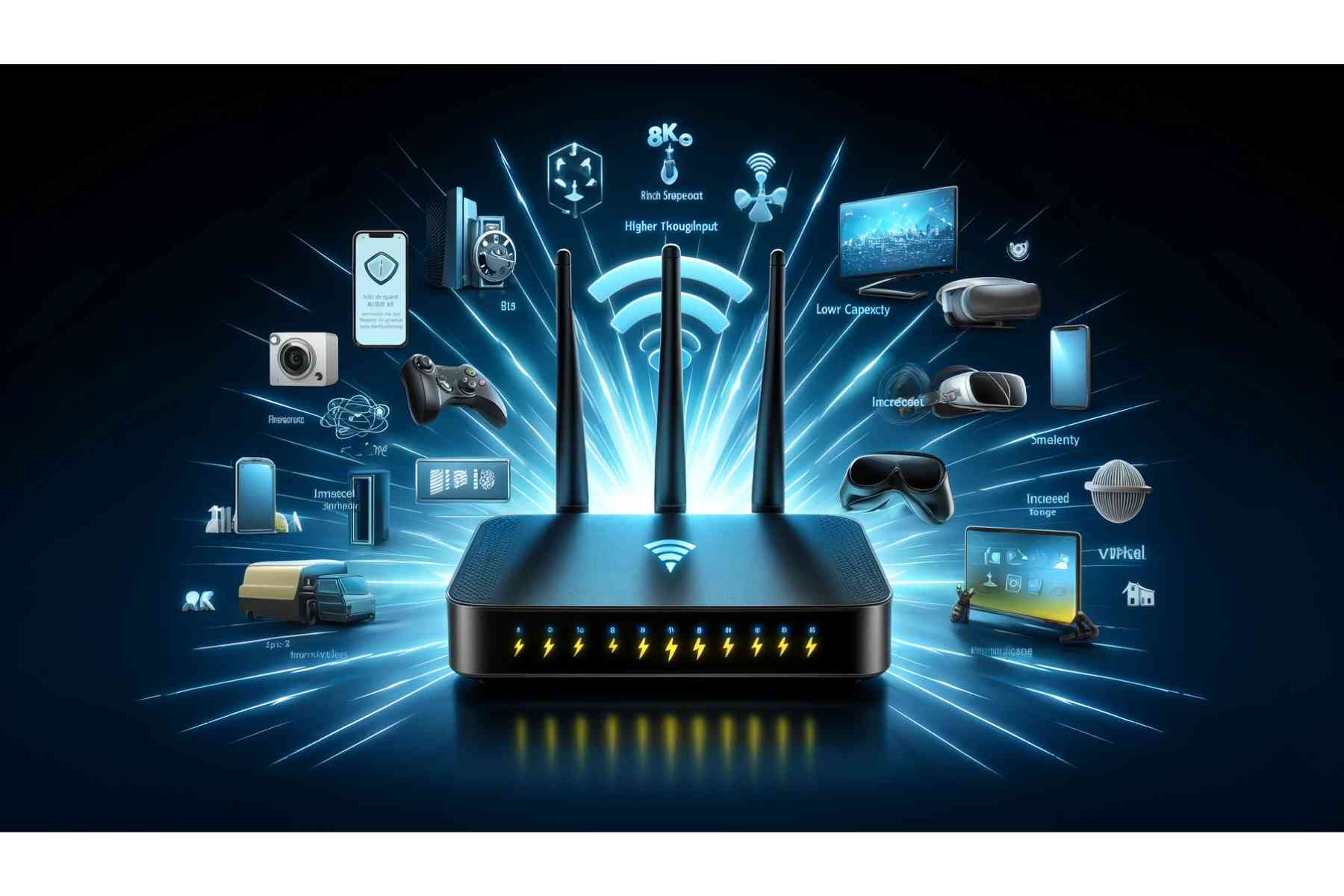
Credited with the title “future of wireless technology,” Wi-Fi 7 is a WiFi standard that provides incredible capacity, excellent speed, and improved connectivity. It prevents interfacing with other devices and, as a result, provides more data transmission channels. Operating at the 6 GHz frequency band, it has revolutionized the previous WiFi standards like WiFi 6 and WiFi 6E, WiFi 5, and others. The best part of Wi-Fi 7 is that it is capable of functioning across three bands: 2.4 GHz, 5 GHz, and 6 GHz.
In comparison to earlier Wi-Fi generations, Wi-Fi 7 offers increased capacity, reduced latency, and faster speeds. Furthermore, bigger 320MHz channels and the 6GHz band provide Wi-Fi 7 networks with more spectrum and less interference. The throughput, efficiency, and peak data rates of Wi-Fi 7 are increased by new technologies such as MU-MIMO, OFDMA, and 4K-QAM. Furthermore, Wi-Fi 7 is compatible with cutting-edge apps, including real-time corporate communication, AR/VR, and streaming 8K video. While many applications currently support Wi-Fi 7, its enhancements make it a desirable option for future-proofing overcrowded networks.
How is WiFi 7 better than previous WiFi standards?
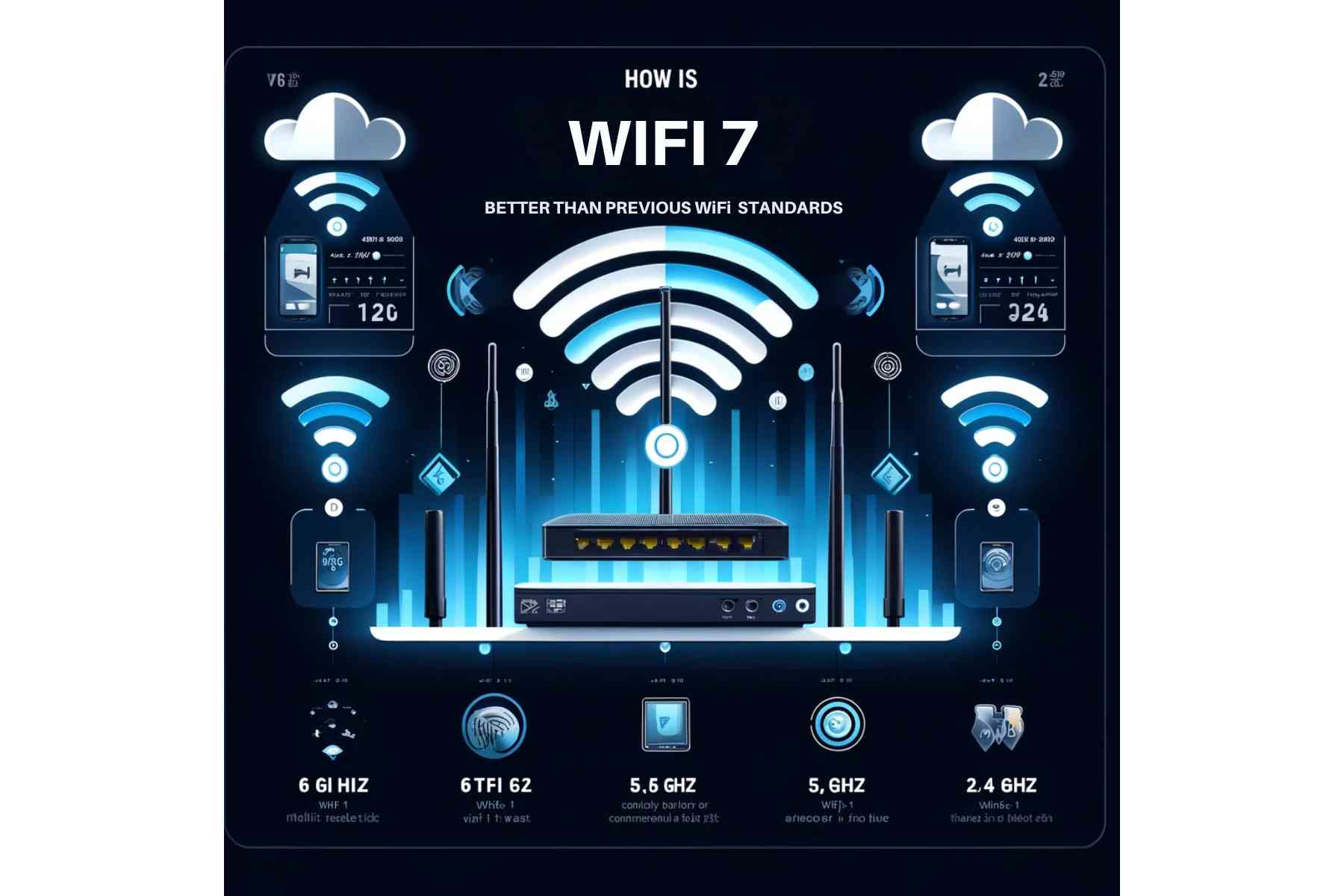
When users consider upgrading to a WiFi 7 router, the first question that comes to their mind is, why should I upgrade to WiFi 7? How is it different from WiFi 6 and WiFi 6E?
Generally speaking, WiFi 7 shares much of its capabilities and benefits with its previous generations. But, there are some considerable and significant that have been packed with WiFi 7. If you are going to upgrade to a WiFi 7 router, these improvements must be in your knowledge. So, here is a table that compares WiFi 7 with its previous generations:
| WiFi 7 | WiFi 6E | WiFi 6 | |
| Launch date | 2024 | 2021 | 2019 |
| IEEE standard | 802.11be | 802.11ax | 802.11ax |
| Max data rate | 46 Gbps | 9.6 Gbps | 9.6 Gbps |
| Bands | 2.4 GHz, 5 GHz, 6 GHz | 2.4 GHz, 5 GHz, 6 GHz | 2.4 GHz, 5 GHz |
| Channel size | Up to 320 MHz | 20, 40, 80, 80+80, 160 MHz | 20, 40, 80, 80+80, 160 MHz |
| Modulation | 4096-QAM OFDMA (with extensions) | 1024-QAM OFDMA | 1024-QAM OFDMA |
| MIMO | 16×16 UL/DL MU-MIMO | 8×8 UL/DL MU-MIMO | 8×8 UL/DL MU-MIMO |
| RU | Multi-RUs | RU | RU |
| MAC | MLO | / | / |
As the table shows, Wi-Fi 7 brings is much better than the previous generations. It has higher bandwidth, increased channel size, and enhanced MIMO technology. Thus, upgrading to WiFi 7 router can be a wise step if you are striving for these features. On the other hand, WiFi 6 and WiFi 6E are still relevant, satisfactory and widely considered WiFi standards.
6 Considerable Advantages of WiFi 7:
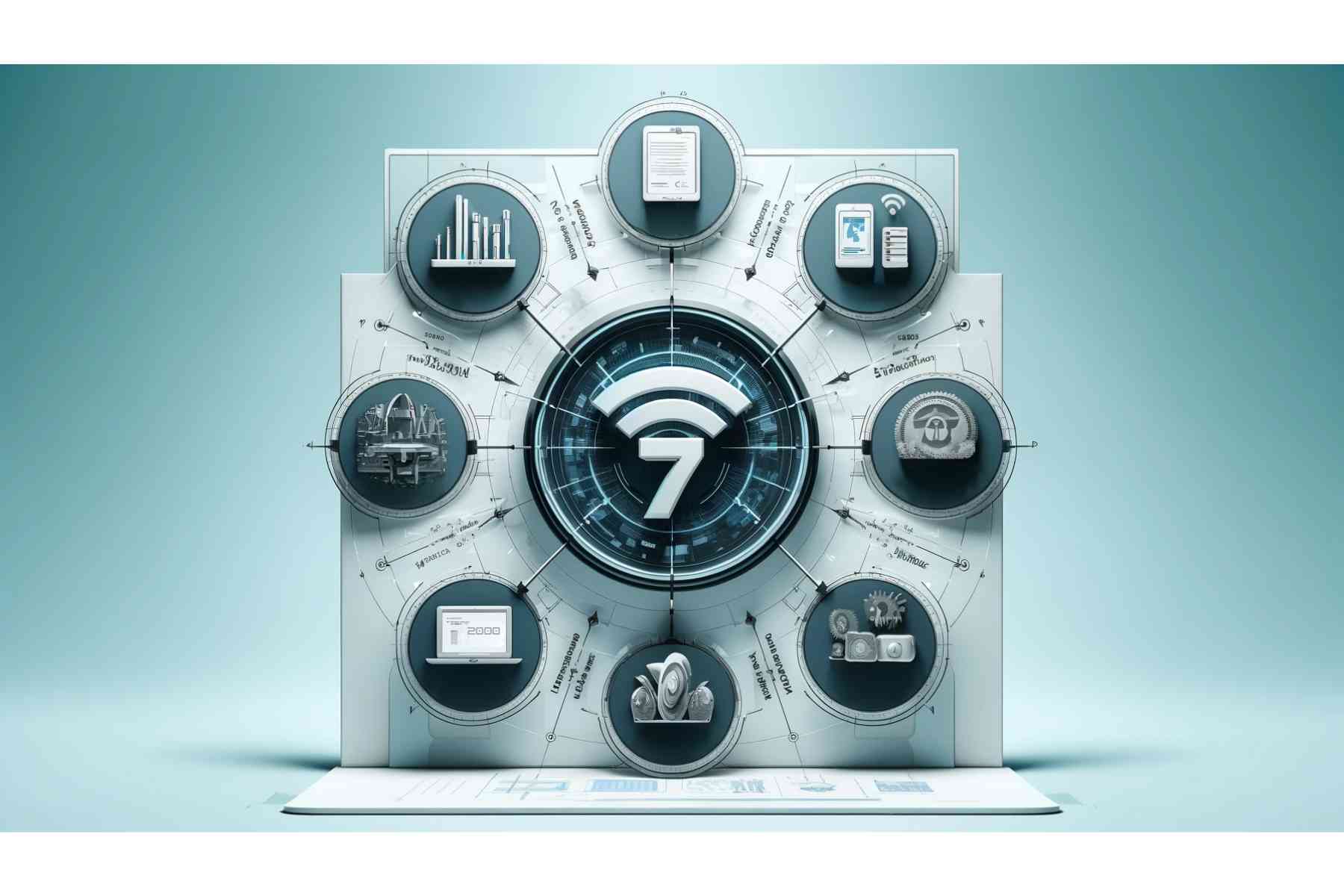
Thinking what are the advantages if you upgrade to a WiFi 7 router? Here is the answer. WiFi 7 has many advantages that can transform how we connect and interact with the digital world. Here are some of the key benefits:
1. Enhanced Speed:
WiFi 7 brings revolutionary improvements in speed, enabling smoother streaming of ultra-high definition video and quicker data transfer.
2. Increased Capacity:
WiFi 7 networks have the capacity to accommodate a large number of connected devices at once. This is especially advantageous for Internet of Things applications, enabling large-scale intelligent automation, smart cities, and smart homes.
3. Lower Latency:
WiFi 7 dramatically lowers latency, allowing for incredibly responsive real-time social gaming and competitive multiplayer gaming experiences.
4. Enhanced Reliability:
WiFi 7 enhances reliability by offering steady and reliable connections even in crowded interior environments with hundreds of mobile devices, laptops, and other devices, as well as continuous wireless noise and interference.
5. Support for Immersive Experiences:
WiFi 7’s sophisticated features make it possible to run augmented reality and virtual reality programs, creating new avenues for engagement and fun.
6. QAM:
QAM is an abbreviation for Quadrature Amplitude Modulation, and it is a radio-frequency technique used for data transmission and reception. You can fit in more information if the QAM is higher. The sophisticated modulation technique 4K-QAM, which can improve peak rates to increase throughput and capacity, is supported by Wi-Fi 7. In comparison, Wi-Fi 5 could only support 256-QAM, but Wi-Fi 6 could support 1024-QAM.
Where Can We Use WiFi 7?
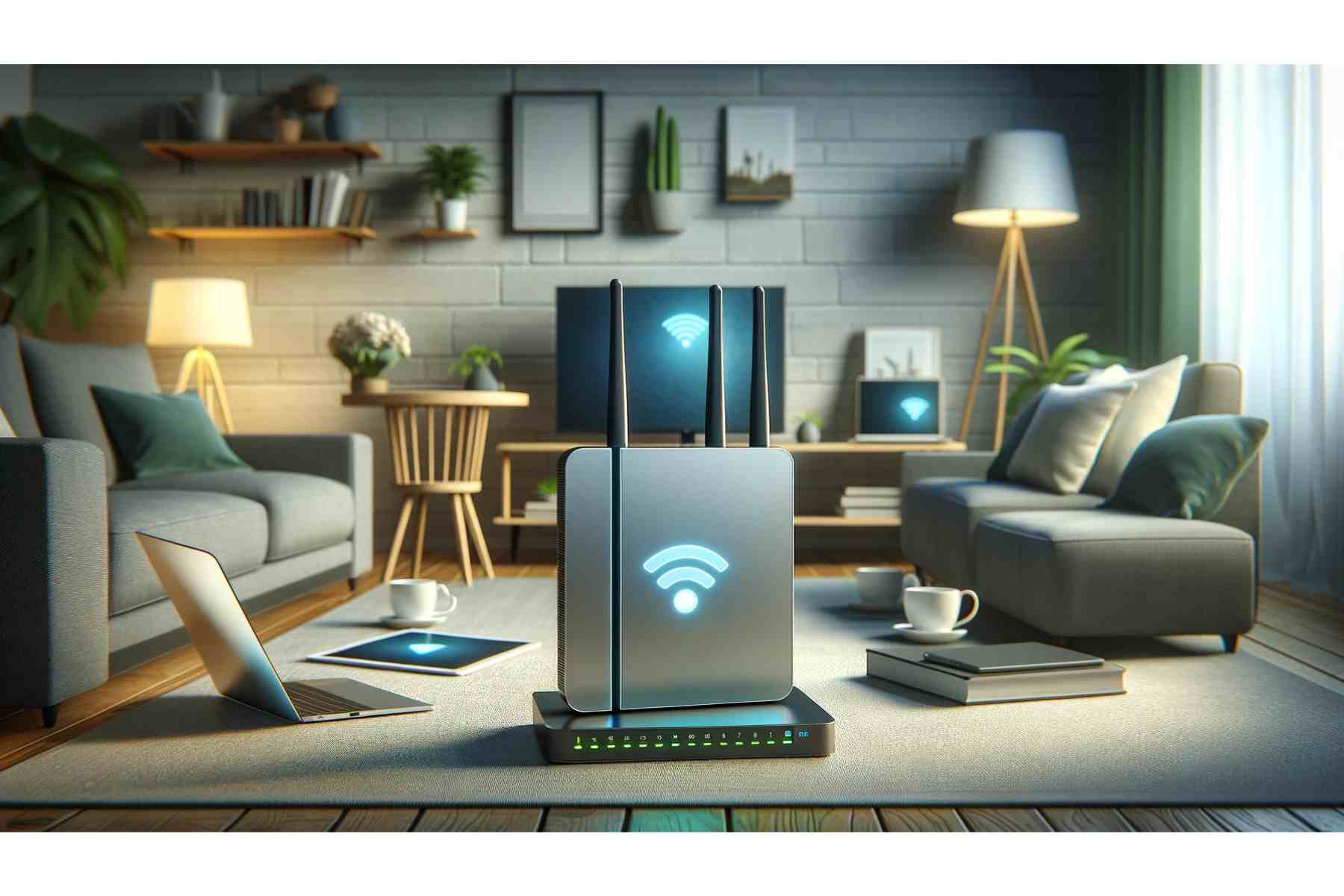
WiFi 7 improves user experiences in crowded locations. Besides, it helps people handle congestion and interface in large venues. In sum, if you are dealing with closely packed devices, you must go for a WiFi 7 router. Some other scenarios where you can use WiFi 7 are mentioned below:
Consumer electronics:
Higher bandwidth and lower latency are essential as homes get smarter and include more connected appliances, streaming services, and gaming consoles.
Businesses and Offices:
The increased capacity and performance that WiFi 7 provides will be necessary for businesses that have a high number of wireless devices, require cloud computing, and use video conferencing.
Healthcare:
To enable telemedicine, access to medical records, and patient monitoring, hospitals and other healthcare institutions depend on wireless technology that must have low latency and high reliability.
Industrial Automation:
As factories and other industrial settings embrace IoT and automate processes, a strong wireless infrastructure is needed to manage multiple devices and send massive amounts of data.
Education:
WiFi 7 technology can help large campus schools and universities sustain high user density, research activities, and online learning resources.
Transport:
For passenger connectivity and operational management, high passenger volume public transportation systems, such as airports and rail stations, require effective WiFi.
Gaming:
The lower latency and faster WiFi 7 speeds are beneficial to the gaming sector, particularly for online and multiplayer gaming.
How To Upgrade To WiFi 7 Router:
When upgrading to WiFi 7 router, there are some steps you need to consider. It can require making some changes in your current networking architecture or rechecking it. The main steps are discussed below:
Router and Device Compatibility:
First of all, make sure that your router supports WiFi 7 and that all your devices are compatible with the new WiFi standard.
Availability and Cost:
Generally, WiFi 7 routers are different in budget plans. However, there are some affordable options like TP-Link Archer BE800. You can choose according to your budget.
Network Infrastructure:
When upgrading to WiFi 7, chances are you have to make some improvements to your existing network infrastructure. It includes ensuring whether your network supports multi-gigabit speed or not.
Conclusion:
In sum, WiFi 7 is the future of wireless technology. The reason is its excellent speed, reliability, and higher bandwidth. In addition, businesses are becoming more congested. Hence, the need for a more reliable and speedy wireless technology has increased. Therefore, WiFi 7 is rocking the scene currently. If you are considering a WiFi 7 router in your network, this blog is a complete guide for you. Read it and make an efficient shift towards WiFi 7. If you want to learn more about how different types of routers, like Cisco routers and more, impact networking, keep visiting us.
Frequently Asked Questions:
Is WiFi 7 available now?
Yes, WiFi is available in the market. It was released in January 2024 when WiFi Alliance introduced its WiFi Certified 7 program.
What do I need when upgrading to WiFi 7?
When upgrading to WiFi 7, the very first you consider is the availability of a WiFi 7 router and other compatible devices.
What is MLO in WiFi 7?
MLO is an abbreviation for Multi-Link Operation. In WiFi 7, MLO is a feature that connects access points and user devices simultaneously using multiple bands. Multi-link devices (MLD) operating in Wi-Fi 7 must have MLO.
Will Wi-Fi 7 improve range?
WiFi 7 routers are expected to allow users to use more power to boost that 6-GHz signal resulting in a considerable boost in its range.




 Catalog
Catalog













































































































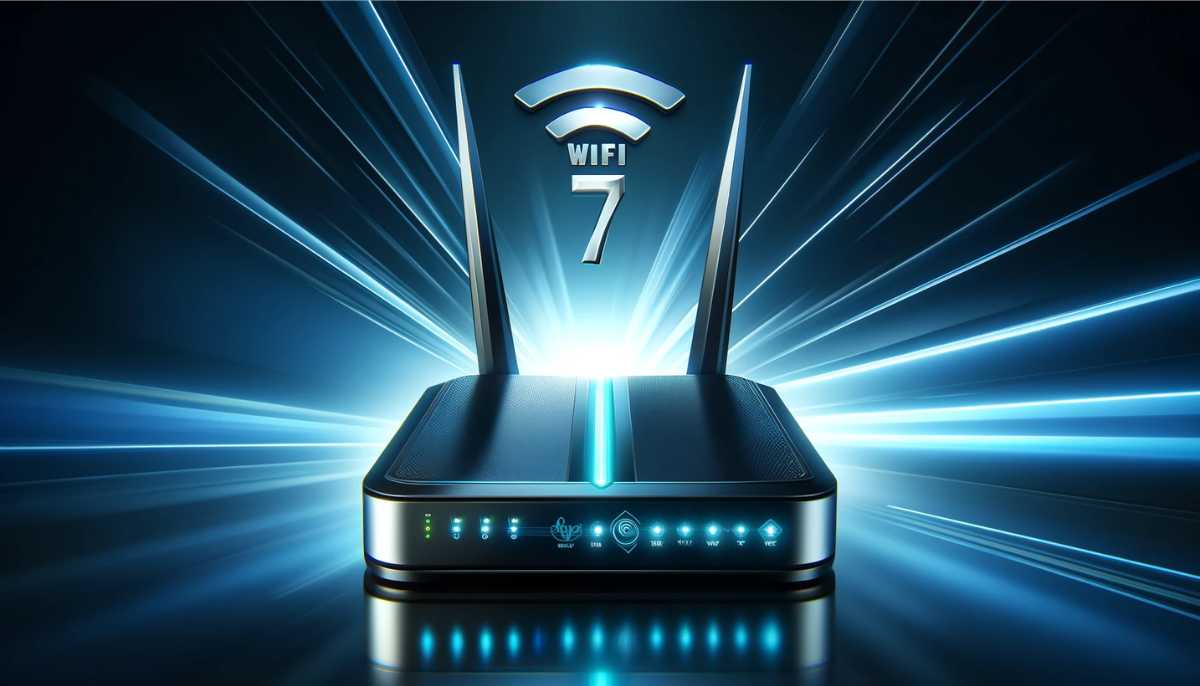
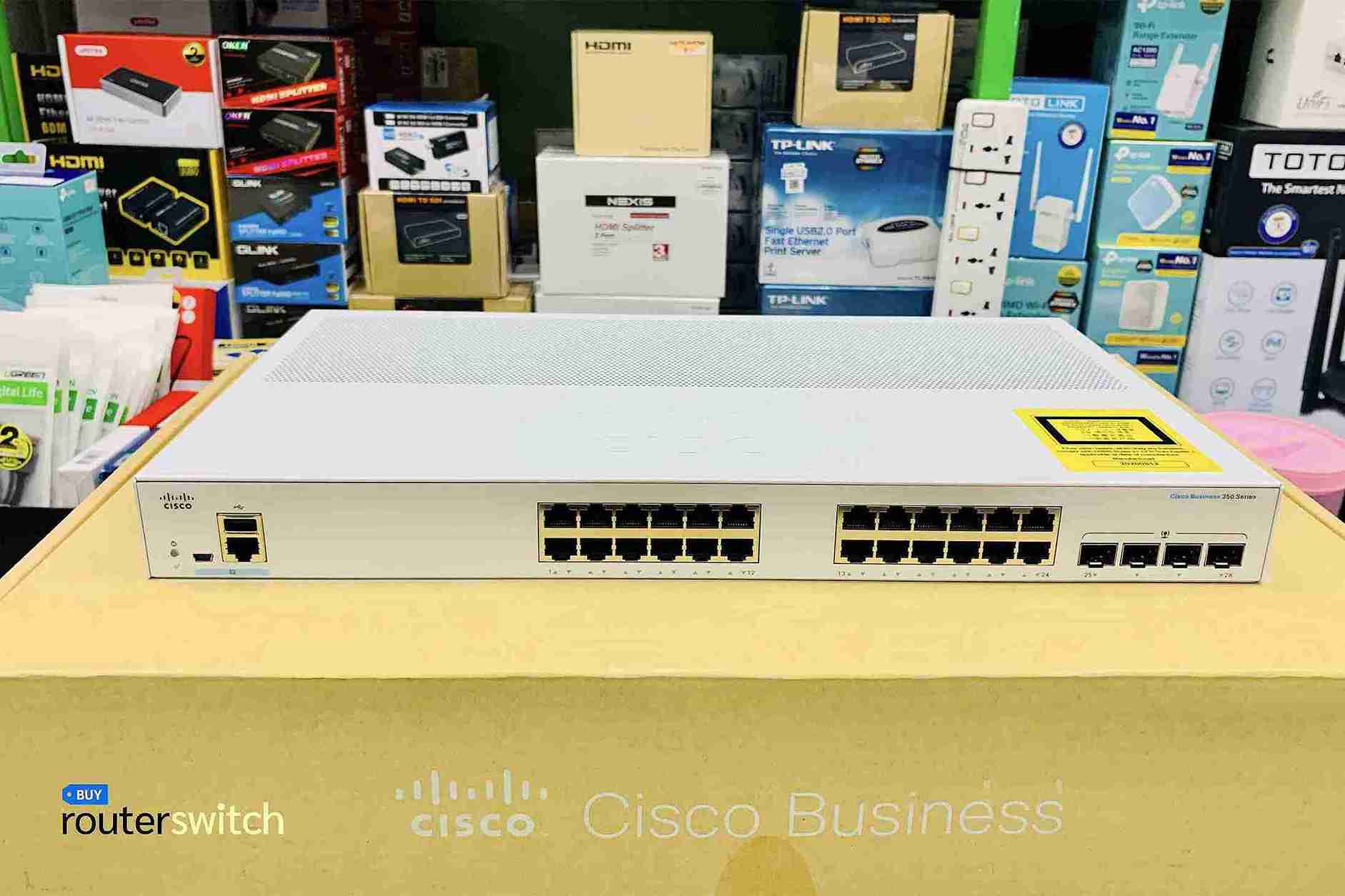






 (800) 870-9487
(800) 870-9487